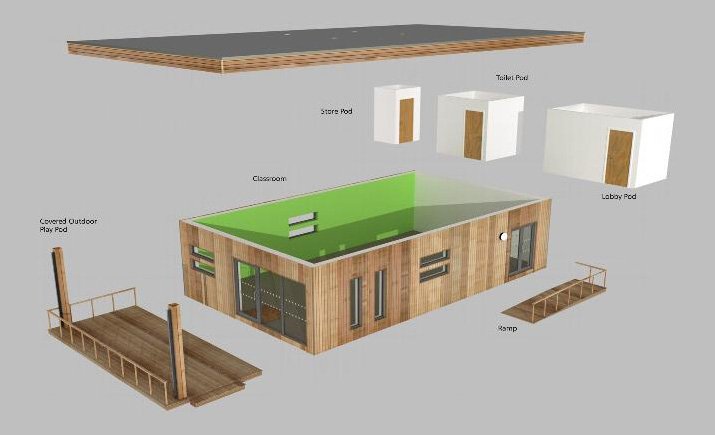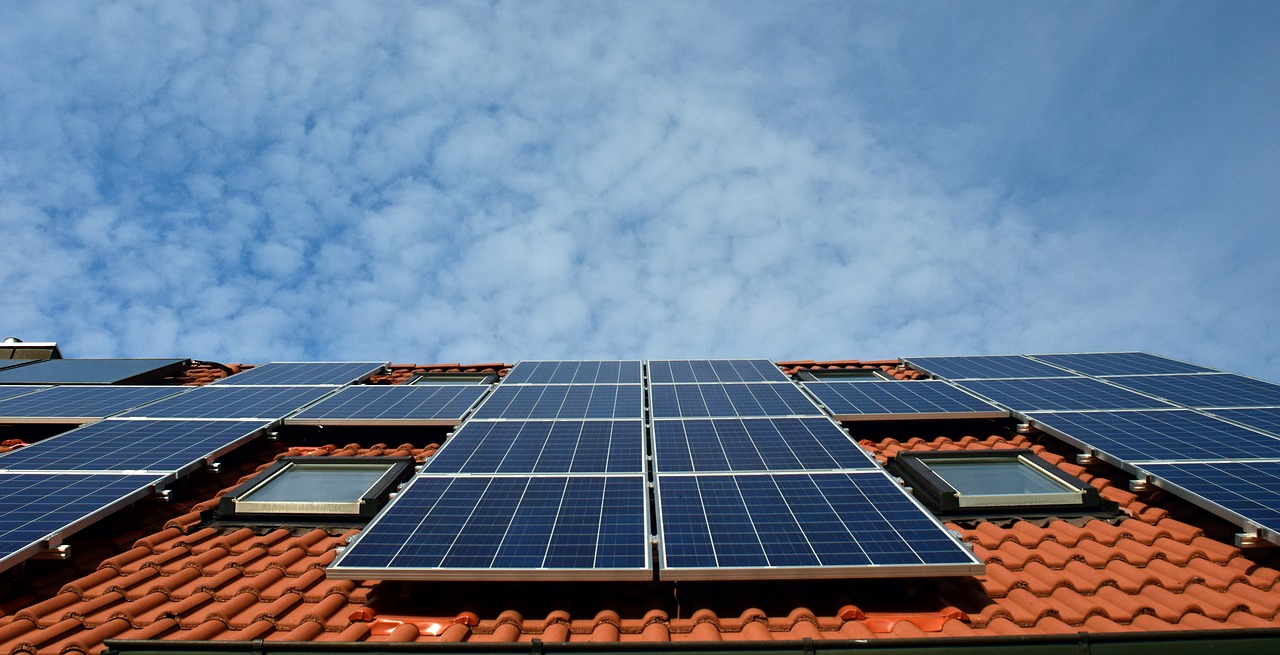WHY CHOOSE A TIMBER FRAME FLAT PACK HOUSE?
From affordability to speedy construction, timber frame flat pack houses offer an extensive range of benefits for homeowners. In this guide, we’ll look at five of the biggest reasons – from design to cost – to choose a timber frame flat pack house.
EASIER TO ASSEMBLE, ESPECIALLY AS AN OWNER-BUILDER
Arguably the biggest benefit of a timber frame flat pack house is that it is easy to put together, even as an owner-builder. Since the main sections of a flat pack house are assembled in advance, the construction process is significantly less demanding and time consuming.
An expert team can assemble a flat pack house in weeks, significantly shortening the traditional assembly and construction process. The simple construction of flat pack houses has made them popular among owner-builders that would like to build their own houses.
Since the materials used in flat pack houses are pre-built, a house can be put together in weeks instead of months. The time consuming aspects of construction – building individual walls, flooring sections and stairways – are taken care of before the build itself, making the final construction of a flat pack house remarkably quick.
In fact, speedy construction is one of the reasons flat pack houses rose to popularity in the first place. During the post-war economic recovery, pre-assembled houses and public buildings were used to replace buildings affected by aerial bombardment in a number of major cities.
Today’s flat pack houses are available in a wide variety of styles and layouts, letting you build a house with the interior floor plan you’ve always wanted.
Depending on your budget, it’s also possible to build a flat pack house in a bespoke and fully customised design. From two-bedroom bungalows to five-bedroom family homes, timber frame flat pack houses are available in a wide variety of styles to suit any family, lifestyle and budget.
10 TO 25% LESS EXPENSIVE THAN A STANDARD HOUSE
As well as being quicker to build than traditional homes, flat pack houses are far less expensive. On average, a timber frame flat pack house costs 10 to 25 per cent less to build than a standard home.
There are a variety of reasons for the lower costs of flat pack housing. One is that the design is entirely standardised, reducing the cost of building materials and creating a more streamlined construction process.
Another reason for the lower cost of construction is the significantly reduced labour requirements. Even large flat pack houses require less on-site labour than standard home construction projects, massively reducing one of the largest building costs.
ENERGY EFFICIENT AND ENVIRONMENTALLY FRIENDLY
In addition to being more affordable, faster to build and just as customisable as an ordinary home, timber frame flat pack homes are energy efficient and constructed with the environment in mind using renewable materials.
Our flat pack houses are made using renewable timber. They’re also built with the environment and renewable energy in mind using a wide range of energy efficient interior design and heating principles to reduce your energy requirements during the cool winter weather.
ARE YOU INTERESTED IN BUILDING A FLAT PACK HOUSE?
From quick construction to reduced building costs, timber frame flat pack houses have a number of benefits. If you’re interested in building a flat pack house, get in touch with us and we’ll contact you as soon as possible.
SELF BUILD KITS

Timber Frame Self-Build House Kits
We offer a wide range of stylish, modern homes available as both timber frame kits and ‘turn key’ complete houses. All of our self-build kits use high quality timber frame for optimum safety and home durability.
Our self-build kits are available in a variety of designs and dimensions to suit your unique lifestyle needs. From 880 square feet up, you can build the home of your dreams to your own exact specifications. Our experienced team can supply a timber frame package for you to construct or build your home from foundations to completion.
Cost-effective and dependable
Self-build kits are made using high spec timber frame for optimum safety and unbeatable affordability. They are designed for quick and easy assembly. Our experienced team can assemble your timber frame package or complete your entire home from the foundations to the doors and windows.
We offer flexible and helpful service for customers interested in building their own homes. If your home construction is delayed due to weather or personal events, we can store your timber frame for up to three months at no cost.
Contact Us to learn more
Contact us today to learn more about our self-build home kits. We can provide a quotation for our structural packages based on your own sketches or an architect’s drawings.
HOW TO GET PLANNING PERMISSION
HOW TO GET PLANNING PERMISSION FOR YOUR SELF-BUILD HOUSE

Building your own home isn’t as simple as purchasing a plot, preparing the building materials and starting construction. In order to build your own home, you’ll need to acquire planning permission from your local council.
Successfully applying for planning permission involves submitting a detailed plan of your home and consulting with the local planning office. In some regions, it may also involve paying a planning fee such as the Community Infrastructure Levy.
In this guide, we’ll look at the process of getting planning permission for your self-build house and how factors such as conservation areas, permitted development rules and rights of access can affect your planning permission application.
OUTLINE PLANNING PERMISSION AND DETAILED PLANNING PERMISSION
There are two types of planning permission applicable to residential properties and plots. These are outline planning permission (OPP) and detailed planning permission (DPP). Both permissions are required to build your new home on a plot of land.
Not all plots come with planning permission. Plots that are sold without permission are typically less expensive than those with OPP. Be careful when buying a plot with no OPP, as it may be subject to restrictions that severely limit your building options.
Outline planning permission lets you know that it’s permissible to build a home on your plot. It does not, however, give you permission to build your specific type and style of home on your plot – this requires detailed planning permission.
DPP needs to be applied for within three years of the OPP being granted. DPP allows you to build a house on your plot of land according to your specifications regarding its design, building materials, layout, location within the land and total size.
REGULATORY RESTRICTIONS TO CONSIDER BEFORE BUYING A PLOT OF LAND
Not all plots are suitable for your dream home. Factors such as a location being part of a conservation area or prior rejected planning applications on your plot can limit your building options and, in some cases, make a plot completely unsuitable.
One of the first things you should check before applying for planning permission is the conservation status of the land. Plots in areas of outstanding natural beauty or green belts are often subject to development constraints and restrictions.
These restrictions can affect your permitted development rights as the owner of the land. Plots in areas of outstanding natural beauty often have severe restrictions on developments such as home extensions, barns or external garages.
It’s also important to check the plot’s past history. Speak with your local council to see if there are existing planning applications on your lot that have been rejected in the past. If there are, check to see if they could limit your ability to build your home.
Some plots are also subject to restrictive covenants that prevent you from using the land for specific purposes. These covenants are part of the land’s title deed and need to be checked in detail by an experienced real estate solicitor.
Finally, you will need to check your plot’s right of access. It is accessible via a shared driveway or a private road? If so, who is responsible for maintaining the access road and will you potentially be subject to ongoing maintenance costs?
Make sure you have checked all of these restrictions in detail before buying a plot of land. If you’re uncertain about a plot, speak to a solicitor to see if it’s affected by any regulations that could restrict your ability to build your home.
PREPARING TO SUBMIT YOUR APPLICATION FOR PLANNING PERMISSION
Before you can submit your application for planning permission, you’ll need to have several reports and documents. These vary from site to site and could include any of the following documents:
Good applications provide as much detail as possible for the local council. Make sure your application includes floor plans and elevation maps of your home. You can also provide an artist’s impression or 3D model of the home to provide more detail.
If your plot contains large trees, they will need to be surveyed to assess the scale of their roots. Homes in conservation areas and those with large trees may be subject to restrictions due to a tree preservation order or local conservation rules.
In addition to tree preservation orders, you may face additional building restrictions if your plot contains protected flora and fauna. Both of these can impose additional recurring costs that need to be factored into your planning permission application.
The local council will also need to know about your home’s potential environmental impact. You will need to submit an eco plan outlining your home’s renewable energy technology, building materials and recycling and waste disposal.
Your application should also document that ground you’re building on. Factors such as soil contamination can result in additional surveys and environmental measures that can delay your build and increase your budget.
You will need to show that your building has access to public roadways. In order to receive planning permission your access to a public roadway will need to provide a safe degree of visibility and be suitable for road vehicles.
In addition to this, you will need to provide a design and access statement that lists your design information. This statement should explain how your home will comply with local building and environmental regulations.
You will also need to provide documentation regarding your home’s access to public sewers and drainage. These should document how your home can be connected to a public sewer without passing over other private land in the area.
Finally, your application should account for your site’s flooding risk. Your plot’s risk of flood damage will not only affect your ability to gain planning permission, it may also affect your building materials, design and the cost of insuring your property.
SUBMITTING YOUR APPLICATION FOR PLANNING PERMISSION
Once you have prepared your application and any supporting documentation, it’s time to submit it to your local council. Applications can be submitted digitally using your local council’s website or in person at the local council offices.
Receiving permission to start building can take several weeks. Once the council has received your application, it consults the environmental agency, highways authority and neighbours to discuss your building and landscaping plans.
At the end of the application process, the planning officer handling your application will visit your plot. You may need to submit an application fee when you submit the application to the local council – this fee varies depending on your region.
A wide variety of factors can result in your application being denied. Keep in close contact with the planning officer handling your application to discover if anything is holding back your application and – if required – whether it’s possible to resubmit.
If your application is successful, you’re free to move on with the process of building your new home. If it isn’t successful, you have a variety of options to move forward and resubmit or revise your application.
Speak to the planning offer that handled your application to learn what resulted in its rejection. Many planning officers are open to compromise and provide feedback that lets you submit a revised application without paying another application fee.
You can also appeal the decision. Appeals to rejected applications need to be filed within six months of the rejection and should be supported by documentation that shows your planning application is compliant with local regulations.
ARE YOU INTERESTED IN BUILDING YOUR OWN HOME?
Would you like to build your own home? We have more than 20 years of experience in designing and building new homes. Contact us today to learn more about building your own flat pack home, acquiring planning permission and more.



